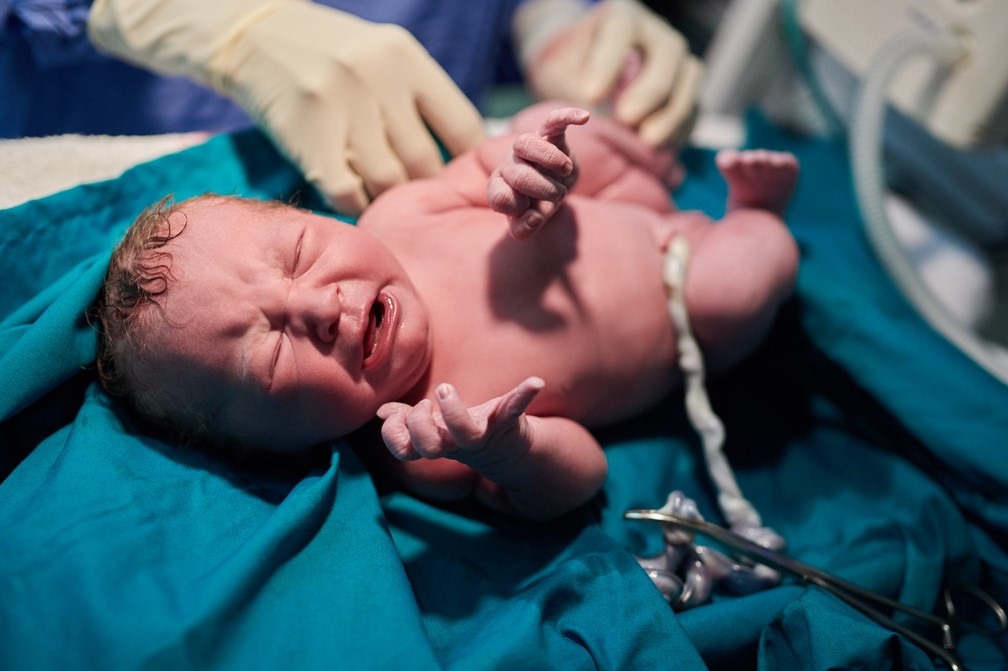
Main diseases of the umbilical cord: what they are
Numerous anatomical and functional abnormalities can affect the umbilical cord during foetal life, which can cause problems that affect both mother and child
For example, compression of the umbilical cord can be caused by various causes, such as the umbilical cord becoming twisted or knotted, or by a nuchal cord (the 360-degree wrapping of the umbilical cord around the fetal neck), but these conditions do not always cause obstruction of fetal circulation.
In the event of obstruction, the foetus may suffer hypoxia to the point of hypoxic-ischemic encephalopathy, which can lead to permanent neurological damage or even death of the foetus.
It is clear from the above how important the correct function of the cord is for the life and proper development of the foetus.
However, the most frequent abnormalities of the umbilical cord are those related to its length, thickness or insertion:
- length anomalies: these are those that occur when the length exceeds 80 cm at birth or is less than 30 cm. If it is short, the cord may break during labour or the knots may tighten causing fetal distress;
- thickness abnormalities: an umbilical cord that is too thin can cause intrauterine growth retardation (IUGR), hypotrophic placenta, cord occlusion with even fatal fetal asphyxia;
- insertion abnormalities: abnormal insertion of the cord on the fetal face of the placenta, in a position that is not central but marginal, can cause fetal harm.
Other possible abnormalities of the umbilical cord are the presence of a single umbilical artery, prolapse of the umbilical cord, nuchal cord and the condition known as ‘vasa previa’.
Presence of a single umbilical artery
The normal umbilical cord contains three blood vessels: one vein and two arteries.
The presence of a single umbilical artery, instead of the normal two, is often associated with malformations.
The incidence of a single umbilical artery is 0.2-5%, lower in single than in twin pregnancies and in term births than in premature babies.
Defining the affected side is important, since left artery aplasia (missing in 70% of cases of umbilical artery aplasia) is associated, in order of frequency, with genitourinary, cardiovascular, gastrointestinal, central nervous system, and musculoskeletal abnormalities.
Furthermore, in 15-20% of cases, a chromosomal abnormality such as trisomy 13 or trisomy 18 is associated.
Prolapse of the umbilical cord
Prolapse of the umbilical cord (or umbilical cord) is a serious obstetric emergency and manifests itself with symptoms of severe foetal distress.
The causes of prolapsed umbilical cord can be many and the most significant include twin pregnancies, untimely amniocesis, prematurity, and polyhydramnios.
One or more loops of the funiculus creep in front of the part presented at the time of delivery, which consequently exerts pressure on the funiculus causing fetal distress.
We speak of prolapse of the umbilical cord when the presented loop has ruptured membranes while we speak of procidence of the umbilical cord when the membranes are intact, however in medical practice it is common to subsume prolapse and procidence in the definition of prolapse of the umbilical cord.
Cardiotocographic monitoring shows obvious bradycardia, and without emergency manoeuvres the fetus will die within a short time.
The only effective solution for eliminating or at least reducing the dramatic consequences of a prolapsed fetus (death of the unborn child or infant cerebral palsy) is to carry out the delivery in the shortest possible time, usually by emergency caesarean section, so as to prevent the compression on the cord from preventing blood flow to the fetus for too long, leading to even fatal ischaemia.
Read Also
Emergency Live Even More…Live: Download The New Free App Of Your Newspaper For IOS And Android
Umbilical Cord: What Is It, What Is It For, What Does It Contain?
Umbilical Cord: Donation And Preservation
Congenital Heart Disease And Safe Pregnancy: The Importance Of Being Followed From Before Conception
The Stages Of Childbirth, From Labour To Birth
APGAR Test And Score: Assessing The Health Status Of An Newborn
Why Are Hiccups So Common In Newborns And How Can They Be Overcome?
Seizures In The Neonate: An Emergency That Needs To Be Addressed
Emergency-Urgency Interventions: Management Of Labor Complications
What Is Transient Tachypnoea Of The Newborn, Or Neonatal Wet Lung Syndrome?
Tachypnoea: Meaning And Pathologies Associated With Increased Frequency Of Respiratory Acts
Postpartum Depression: How To Recognise The First Symptoms And Overcome It
Postpartum Psychosis: Knowing It To Know How To Deal With It
Childbirth And Emergency: Postpartum Complications
European Resuscitation Council (ERC), The 2021 Guidelines: BLS – Basic Life Support
Pre-Hospital Seizure Management In Paediatric Patients: Guidelines Using GRADE Methodology / PDF
New Epilepsy Warning Device Could Save Thousands Of Lives
Understanding Seizures And Epilepsy
First Aid And Epilepsy: How To Recognise A Seizure And Help A Patient
Childhood Epilepsy: How To Deal With Your Child?
Epileptic Seizures: How To Recognise Them And What To Do
Placenta Previa: Definition, Causes, Risk Factors, Symptoms, Classification


